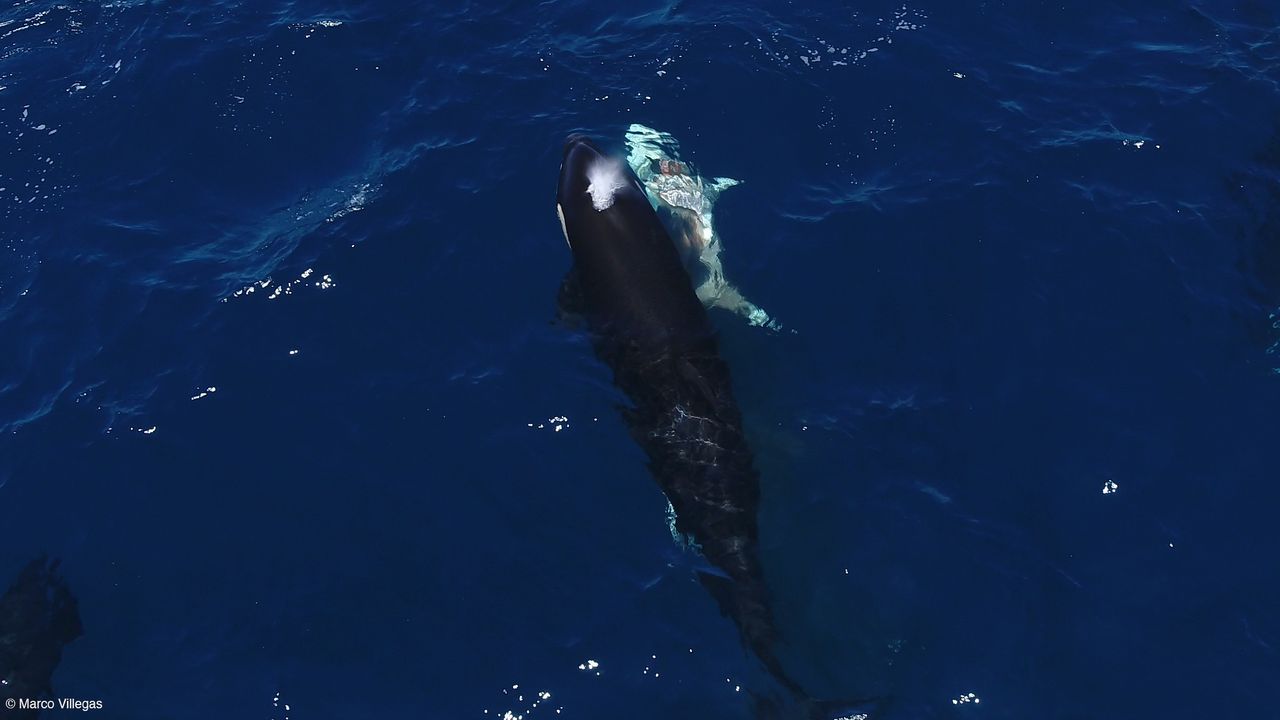URGENT UPDATE: Researchers have made startling observations of orcas in the Gulf of California attacking and consuming the livers of juvenile great white sharks. This unprecedented behavior was documented in a new study released on November 3, 2023, revealing a shocking method of predation that has never been seen before.
The study highlights that orcas, specifically from Moctezuma’s pod, employ a unique technique to immobilize their prey. By flipping young sharks upside down, they induce a trance-like state known as tonic immobility. This state leaves the sharks defenseless, allowing the orcas to extract their nutrient-rich livers with ease. “This is the first time we are seeing orcas repeatedly target juvenile white sharks,” said Jesús Erick Higuera Rivas, a marine biologist involved in the research.
In three documented attacks, the orcas were observed sharing their gruesome catch among themselves. These incidents occurred off the coast of Mexico, marking a significant expansion of known orca hunting behavior in the Northeast Pacific, a region where such acts were previously rare. The last confirmed sighting of orcas hunting great whites in this area dates back to 1997.
The study’s co-author, Salvador Jorgensen, emphasized the implications of these findings: “Adult white sharks react quickly to hunting orcas, completely evacuating their seasonal gathering areas. However, juvenile white sharks may be naive to orcas.”
The first two attacks occurred in August 2020, where five orcas successfully chased a young great white until it was exhausted, flipped it onto its back, and swiftly attacked. The third incident, documented in August 2022, followed a similar pattern and resulted in the orcas extracting the liver of another juvenile shark.
Researchers noted that the injuries sustained by the sharks suggest that tonic immobility minimizes the risk of the orcas being bitten during the extraction process. It remains unclear whether the orcas exclusively target juveniles or if they also hunt adult great whites.
The implications of these findings extend beyond just predation. As shark populations shift due to climate change, rising ocean temperatures, and events like El Niño, the Moctezuma pod may be capitalizing on an increase in juvenile great whites in the Gulf of California. Co-author Francesca Pancaldi reinforced the potential for other orca pods in the area to adopt similar hunting techniques.
“This behavior showcases orcas’ advanced intelligence and social learning capabilities,” Higuera Rivas stated, highlighting the complex dynamics of marine ecosystems.
As scientists continue to explore these remarkable predatory behaviors, the urgency to understand the implications on both shark and orca populations is paramount. The revelations from this study are not only a testament to the intricate relationships within marine life but also serve as a call to action for conservation efforts in rapidly changing ocean environments.
Stay tuned for more updates as this story develops and the marine biology community responds to these shocking revelations.





































































